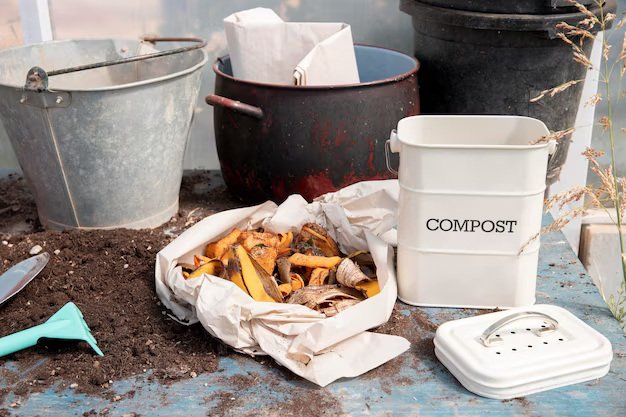Rooftop Gardening Grows as Smart Eco Solution in Cities
In recent years, cities around the world have embraced rooftop gardening as a smart, eco‑friendly solution to urgent urban problems. In Basel, Switzerland, local authorities mandated green roofs on all new and renovated buildings with shallow slopes, backed by public subsidies and scientific guidelines. That policy led, by 2019, to an average of over five square metres of rooftop green space per person. Ecologists like Stephan Brenneisen helped adapt design standards (such as substrate depth and native seeds), ensuring the gardens foster insect and bird biodiversity and moderate storms and heat waves. “Green roofs do a lot of things medium‑well … and green roofs are one of the few things that do,” says Dusty Gedge, president of the European Federation of Green Roofs and Walls.
In Hamburg, Germany, the city launched a Green Roof Strategy aiming for 100 hectares of greening by supporting voluntary installations with 30–60 % subsidies and moving toward mandatory greening laws by 2027. Over in Bhubaneswar, India, The Times of India reported that a government campaign launched in July 2025 is promoting rooftop gardening through a mobile vehicle that travels across cities, offering expert demonstrations and educational materials to engage residents on modern techniques and sustainability benefits.
These are not isolated efforts. According to a Hong Kong study, Urban planners used geospatial data to assess that over 85 % of buildings had immediate potential for rooftop greening, which could increase greenspace exposure by 61 % and create hundreds of millions in local economic value annually, even though the citywide cooling effect might be modest (≈0.15 °C).

Learn More: 10 Benefits of Gardening to the Environment
Real Impacts: The Environmental, Social, and Health Benefits
The practical effects of rooftop gardens go well beyond aesthetics. A US EPA study reports that rooftop gardens reduce roof surface temperatures by up to 56°F and surrounding air temperatures by as much as 20°F, cutting indoor cooling loads by up to 70 % and producing annual energy savings of roughly $0.15–$0.57 per square foot per year for cooling and around $0.18 for heating. Stormwater runoff is also dramatically reduced—often by 60–100 % or more—helping prevent overflow into city sewer systems and improving water quality.
One study in Dhaka (Uddin et al., 2016) found urban dwellers were inspired to start rooftop farming by neighbours already doing it. In Nepal’s Morang and Sunsari districts, researchers surveyed rooftop farming and found that adopters often used about one‑third of their rooftop space, and that larger roof sizes correlated with adoption. Clearly, social encouragement and physical space matter.
Studies also show emotional and mental health benefits in urban gardeners. A survey of urban agriculture participants found improved mental well-being, reduced anxiety and depression, better social connections, and healthier diets. One review concluded that “gardens which maximise social benefits can outperform conventional agriculture when broader benefits are taken into account.”
In Basel, rooftop gardens have become surprising refuges for nature: residents spotting mushrooms sprouting from old wood, blackbirds feeding kittens of worms on roof edges, native wildflowers colonising abandoned patches. These quietly establish biodiversity stepping stones in dense cities.
Examples from Practitioners and Experts
In Denver, Jennifer Bousselot, a horticulturist at Colorado State University, manages a 576 ft² rooftop garden above a building near the Denver Coliseum, where she harvested over 200 pounds of produce—including cucumbers, peppers, tomatoes, and basil—long before the growing season even ended. According to a Wired report, the rooftop was designed specifically for her research into the emerging field of rooftop farming. Her work illustrates a broader trend of “rurbanization,” which blends rural agricultural practices with urban environments to boost resilience, food access, and localised cooling effects.
In Montreal, the Rooftop Garden Project—part of community food initiatives—produced one ton of food, representing one‑third of its internal program needs. They developed soil‑less self‑watering containers from recycled materials, taught residents how to grow in tight urban spaces, and emphasised affordability and independence in food supply.
From Chengdu, China, researchers shared a rooftop design concept integrating deciduous trees, shrubs, grasses, water‑storage layers, and sound‑absorbing soil to tackle urban noise, dust, stormwater, and heat island effect. Though still theoretical, the concept showed promise in combining ecological, structural, and artistic considerations in rooftop design.
These experiences align with peer-reviewed academic findings. A 2022 study conducted in Berlin evaluated the effectiveness of green roofs and reflective “cool roofs” during a heatwave, using thermal and urban canopy modelling. The researchers found that both strategies significantly reduced human heat stress—measured by the UTCI (Universal Thermal Climate Index)—and shortened periods of strong thermal discomfort from around seven to five hours per day. While cool roofs outperformed green roofs in reducing rooftop surface temperature, green roofs still contributed meaningfully to human thermal comfort, particularly when well-irrigated
Why Rooftop Gardening Is the Eco-Smart Choice—and What You Can Do
Cities today face shrinking greenery, rising heat, stormwater overflow, polluted air, food insecurity, and mental health stress. Rooftop gardens address so many aspects at once: they absorb heat, capture rainwater, sequester some carbon, feed residents, and provide mental respite.
Table: Summary of Measured Benefits of Rooftop Gardens
| Benefit Area | Typical Impact | Source & Year |
|---|---|---|
| Surface cooling | Up to 30 °F lower roof temp | US EPA, 2025 |
| Runoff reduction | 60–75 % reduction in rainfall release | EPA/Wiki, 2025 |
| Greenspace exposure | +61 % exposure in dense urban areas | Hong Kong study, 2024 |
| Biodiversity | Native bees, birds, even bats on roofs | Global reviews, 2023 |
| Mental health | Reduced stress, better sociability | UA surveys, 2023–24 |
| Food production | Up to one‑third of program needs | Up to one‑third of the program needs |
The example from Basel shows that policy—public votes, mandates, subsidies—multiply gardens and biodiversity. Hamburg now follows with legal requirements supported by financial incentives. Smaller-scale efforts, like Montreal’s self‑watering containers or Bhubaneswar’s educational outreach, demonstrate how grassroots involvement and community support help.

Practical Advice to Begin Your Own Rooftop Garden
If you’d like to start or advocate for rooftop gardens in your city, here are evidence‑based steps:
First, assess structural safety. Many building codes now support rooftop greening, but load‑bearing capacity and waterproofing must be checked. Experts recommend substrate depths of at least 12–15 cm for native plant survival and stormwater retention, as seen in Basel-inspired design.
Second, choose plants wisely. Native grasses, sedums, small shrubs, and herbs provide cooling, pollinator habitat, and low maintenance. In Basel and Chengdu, planners emphasised native species adapted to the local climate.
Third, manage water smartly. Soil‑based systems with rainwater capture or soil‑less self‑watering containers help reduce runoff and labour, as demonstrated in Montreal’s container gardens.
Fourth, start small and leverage the community. Surveys in Nepal and Dhaka confirm that when neighbours grow and share knowledge, adoption spreads fast. Even balconies or small decks can serve as pilot rooftop gardens that inspire others.
Fifth, advocate for policy support. Push for local incentives or mandates with subsidies similar to Hamburg and Basel, backed by scientific guidelines and public awareness efforts. Public votes in Basel turned rooftop greening into a political priority; Bhubaneswar’s mobile campaign proves community outreach matters.
Conclusion
Rooftop gardening is more than a hobby—it’s a multi‑solution urban strategy. It cools buildings, cleans air, manages rainwater, nurtures wildlife, grows food, reduces stress, and connects communities. Case studies from European cities, Canadian NGOs, and grassroots urban farmers show that even modest efforts yield real benefits.
With the right structural checks, plant choices, water systems, community outreach, and policy advocacy, anyone—even at the local level—can catalyse rooftop gardens. As our cities grow, building upward can also mean building greener, healthier futures above our heads.







